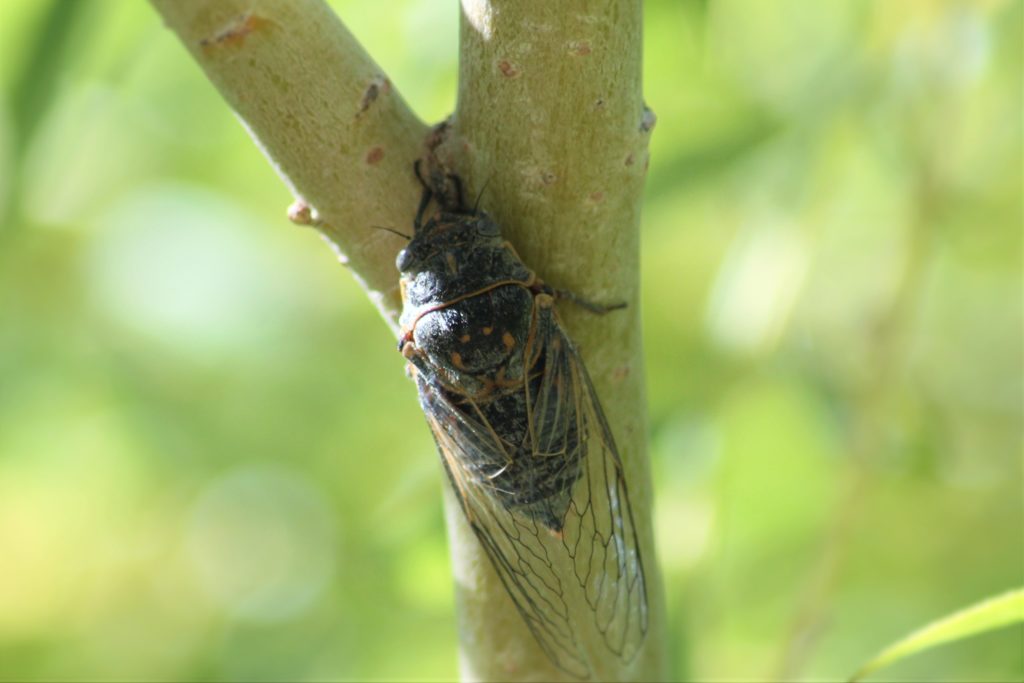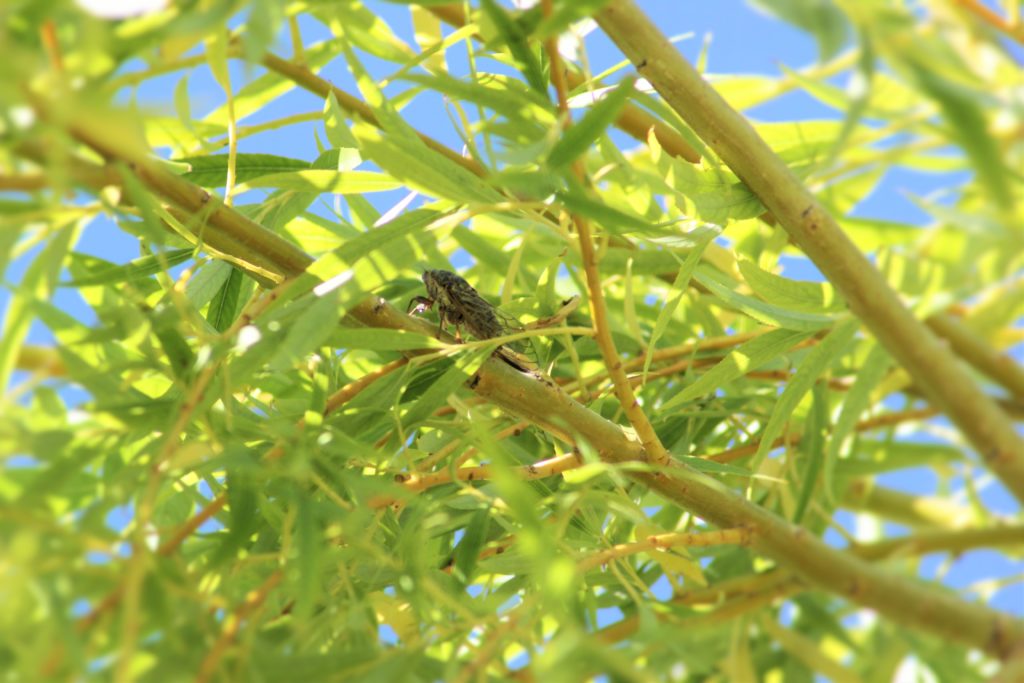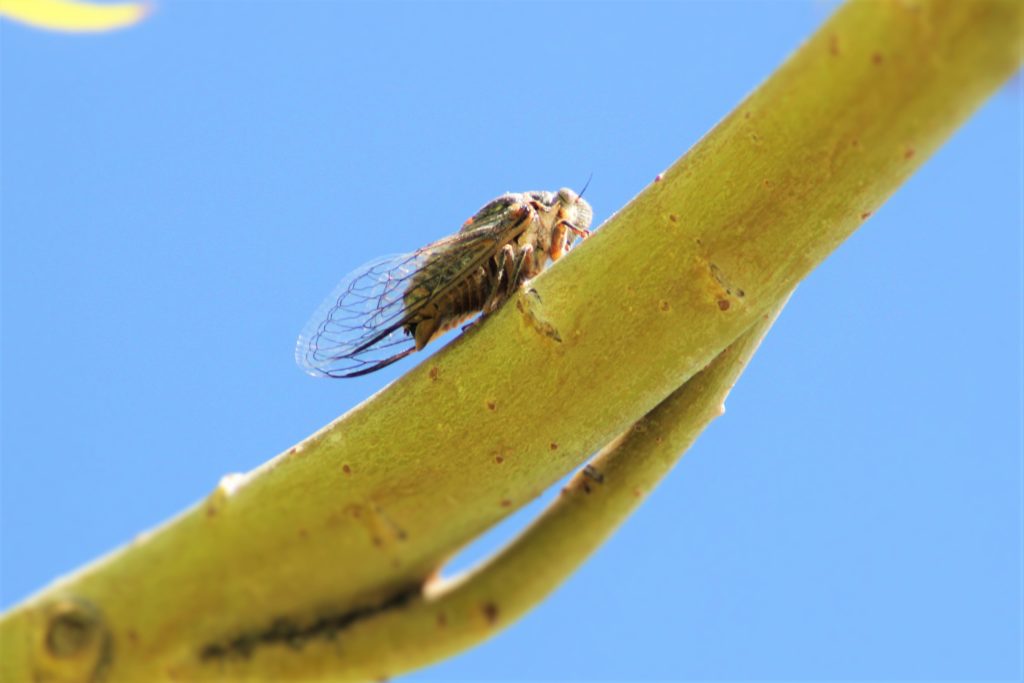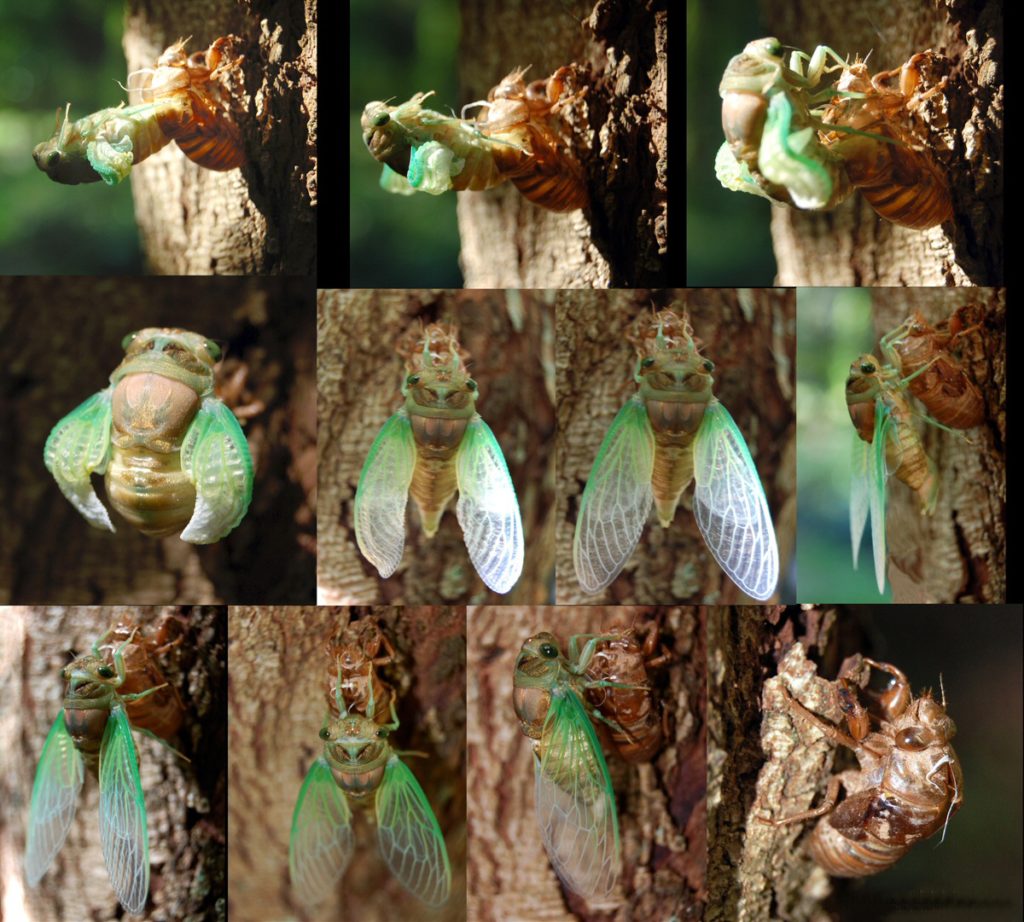 Cicada are an interesting insect. And they are not something you see or hear very often in the high desert. We have a couple of willow trees in our front yard, and they have been buzzing with the sounds of cicada.
Cicada are an interesting insect. And they are not something you see or hear very often in the high desert. We have a couple of willow trees in our front yard, and they have been buzzing with the sounds of cicada.

I guess the cicada like the sap of the willow trees. You can hear them coming from other parts of the yard, but the number in the willow trees overshadows the other locations. The cicada feed off the sap of trees and other plants. They don’t usually don’t cause harm to the trees. They don’t bite, or sting, so they are harmless to people as well. I think the birds on the farm are going to find them very tasty. I am tempted to capture one and see how well the chickens like them.
Here are a couple of interesting facts that I found out about cicada that I did not know until I started to research them.

1- There are several different types. There are the type that you only see every 16-17 years (periodic cicadas), and then there are a type that make their appearance every year or annually. I believe that is the type we see here in Utah, because we hear them every year, but not in as great a number as this year.
2- They don’t rub their wings or legs together to make their buzzing noise, but they have special chambers that they have in their body that they then vibrate to create the buzzing noise. The expand and contract these chambers which make a special adaptation of their exoskeleton vibrate. The males are the ones that are making the noise. You can listen to their buzz or song here.
3- They regulate their temperature using a form of evaporation. They will excrete the sap, in the form of water, that they feed on. This makes them pretty unique because they are doing the same thing that mammals do, they are in essence sweating.
4- They also have a rich history in old texts, and lore. “Cicadas have been featured in literature since the time of Homer’s Iliad, and as motifs in art from the Chinese Shang dynasty. They have been used in myths and folklore to represent carefree living and immortality. Cicadas are eaten in various countries, including China, where the nymphs are served deep-fried in Shandong cuisine.” [Source]
[amazonjs asin=”1590786734″ locale=”US” title=”Cicadas!: Strange and Wonderful”]
[amazonjs asin=”1433970406″ locale=”US” title=”The Bizarre Life Cycle of a Cicada (Strange Life Cycles (Gareth Stevens))”]

